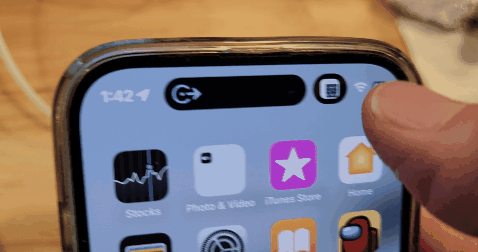
Apple's new iPhone 14 Pro Dynamic Island is now a bit more dynamic. iOS 16.1, which officially launched on millions of iPhones this week, brought new gesture controls to Apple's innovative notch replacement.
Available only on iPhone 14 Pro and iPhone 14 Pro Max, Dynamic Island not only moved the True Depth module down from the top edge of the iPhone, but also created an island of expendable functionality. Technically, Dynamic Island is actually two Super Retina Display XDR screen cutouts, one pill-shaped and the other wider and more cylindrical. Apple cleverly uses the little chunks of pixels between the two shapes to create what appears to be a fully dynamic, living digital island.
Within the dynamic island are activity symbols to indicate if, for example, your phone is locked, playing music, or providing map-based directions. It may appear to expand to offer more map detail or perform Face ID analysis. In other words, the island, which is also compatible with third-party apps, is designed to be many things to many people.

In iOS 16.1 it gets another trick. The dynamic island is already capable of showing two apps running at the same time, but they usually appear as two islands separated by pixels from the home screen. Now with a swipe you can easily hide an activity. Apple has confirmed that this feature, which first appeared in the iOS 16.1 beta, is now part of the public download.
For example, we launch Apple Music and start playing a song, then switch to Maps and set up navigation for home. On the home screen, the dynamic island displayed these activities on two separate islands, for lack of a better word. If we place a finger on, for example, the smallest music island and slide it to the left, the music island is hidden and we only have a dynamic island of original size that runs the directions of our map.
Another quick swipe to the left on the far left of the dynamic island brings up the music app, which ends up on its own little island on the right.
It's a small change, of course, but also an indication that Apple views Dynamic Island, which already responds to touches, as a platform on which it can build a world of interaction.
We love control and expect more.